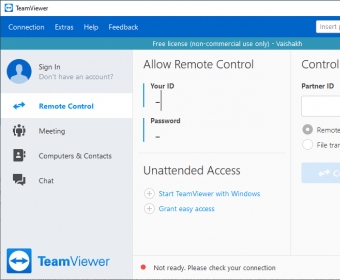

You’ll want to choose a remote desktop program so you can get started. That’s another reason we recommend using a service rather than setting up your own server and exposing it to the wild Internet. Simply exposing a remote desktop server to the Internet can put your computer at risk, as people can log in if you have a weak password or insecure, outdated server software. This is why we recommend using a service that handles the login bits for your rather than setting up your own server - we’ll cover that in the next section. If you opt to set up your own remote desktop server software, you’ll need to set up dynamic DNS so you can always access your computer and set up port forwarding so you can connect to your computer from the Internet.

Remote desktop software is ideal for accessing desktop applications, not watching videos or playing games. If you attempt to watch a video on your remote computer, you’ll definitely notice delays and dropped frames - you won’t just see a smooth video. When accessing a computer over the Internet or even the remote network, actions you perform on your computer’s desktop won’t register immediately. You’ll need to leave your computer running the whole time unless you want to attempt to set up Wake-on-LAN. This isn’t a problem if you’re in the other room, but it can be a problem if you’re travelling far away. Your computer needs to be on so you can access it. Remote desktop software also allows you to use local applications and files stored on your home or work computer from anywhere you are. You can use remote desktop software on a Mac, Chromebook, iPad, or Android tablet, accessing Windows software on a non-Windows device.


 0 kommentar(er)
0 kommentar(er)
